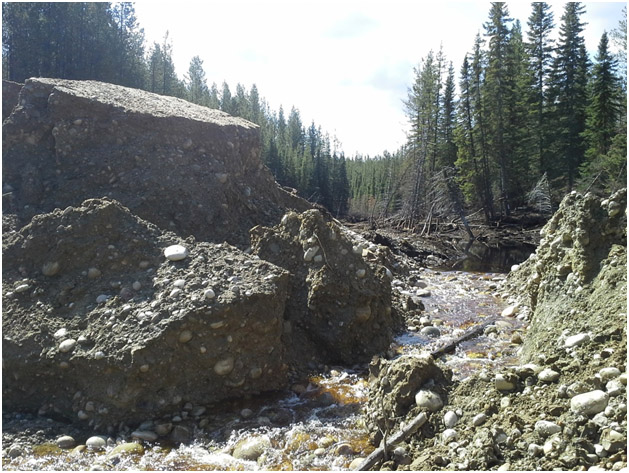Living the Green Dream!
May 29, 2015 10:05 am Leave your thoughts

I am thrilled to be back in Whitecourt to begin my second summer as a roads summer student with Millar Western Forest Products. Last year, my work consisted primarily of GPS mapping all of the roads that Millar Western owns under road lease agreements. Selected as a Green Dream Intern, I blogged about my work and travel experiences; for those who are interested, the posts are still available on The Greenest Workforce’s website.
So far this summer, I have been mostly involved in training, a key focus of which is safety — a definite priority at Millar Western. Up to this point I have completed training on ATV operation, defensive driving, radio use, spill response, wildfire response, and environmental management, to name a few things.
This upcoming Wednesday, I will be taught how to complete water crossing inspections, something that I will be doing for the majority of this summer. Every bridge and culvert that a company owns must be inspected every few years, depending on the size and type of the body of water that is being crossed. This summer happens to be a year where a lot of these inspections must be completed for Millar Western, and it will be my job to do these inspections.
Before any inspections are completed on the ground, however, I will be up in the air in a helicopter, checking for any major or obvious issues. Millar Western has a lot of crossings, and the quickest and easiest way to spot any issues that may have developed in the past year is from the air.
Spring breakup can be a difficult time for water crossings. Small culverts can freeze solid easily, stopping water movement and flooding ditches. Water that is sitting in the ditch of a road will eventually soak into the road base, causing soft spots that are extremely difficult to fix. If enough water builds up behind a blocked culvert, and it has nowhere to go, it can actually blow out the culvert. Sometimes this happens because of beaver activity in an area, as beavers like to build dams in culverts. Culverts are often the narrowest part of stream or creek and, therefore, the easiest place for beavers to block off. When a beaver dams a culvert to create a pond it is only a matter of time before the culvert gives out.
Millar Western just recently had a culvert wash away thanks largely in part to the construction skills of a busy beaver. The culvert was over a meter in diameter, but a beaver pond, combined with the spring melt, ended up being too much for it and it washed away. At least we think it washed away. So far we have actually been unable to find any sign of the culvert. I walked about a kilometer down the stream, which is winding and has lots of places for a culvert of that size to get caught up on, and was unable to find it. My supervisor has a theory that it might have been buried when the road collapsed around the washout, but we don’t want to disturb the stream channel at all to go digging for it.
At the end of this blog you will find a picture of the road where the culvert used to be, before action was taken to minimize further disturbances to the stream. This crossing was on a road that Millar Western doesn’t use very much, so we have little interest in replacing the culvert. Instead, we pulled back the road in a way that should prevent any material from falling into the water, and re-contoured the ground to make a nice, gentle slope that goes toward the stream. We then had cross ditches installed (ditches that run perpendicular to the normal road ditches, crossing the road surface from one side to the other) to stop water from running down the road and straight into the stream, instead forcing water into the trees on either side of the road. This way, water is filtered by the vegetation in the area before making it to the water, reducing the amount of sediment that is added to the stream. Just in case any water makes it past these ditches, we also put down coco matting, a material that prevents erosion and makes a nice seed bed for grasses and other plants to grow on, further reducing soil erosion. Below the coco matting (which we seeded with grass seed), we installed silt fences. Silt fences are made of a tarp-like material that lets water through but filters out soil particles, helping to keep streams clean. To properly install silt fences, the bottom portion of the fence has to be dug below ground so that no water can go underneath it. This means that my supervisor and I got to spend the better portion of a day under a hot sun, digging through sand, gravel and cobblestone so that we could install the silt fences properly. It was hard work, but pretty satisfying once we finished everything and got to admire our handiwork.
I will be visiting this washout again sometime over the next few days to make sure that everything is looking good still. When I do go back I will make sure to take pictures of what the road looks like now, so that you can see just how different it looks now. Those pictures will appear in my next blog in about two weeks, so keep checking The Greenest Workforce’s website for updates.
The aftermath of a culvert washout: a beaver pond combined with snow melt led to a road failure and a missing culvert.
